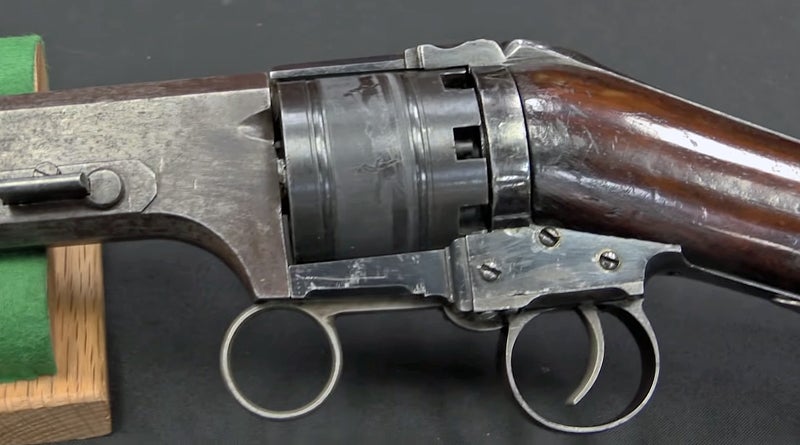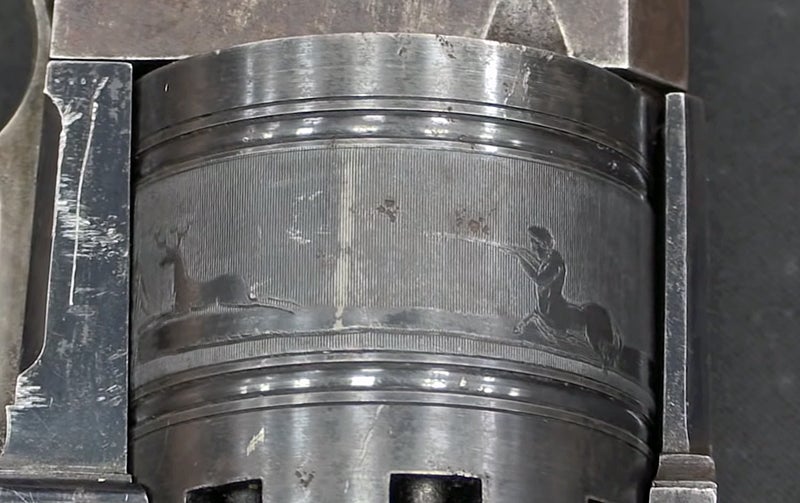Watch: Colt Paterson No. 1 Model Revolving Carbine
Russ Chastain 05.22.19

The early days of Sam Colt’s gunmaking weren’t all that successful for him. After doing a bit of work in Baltimore, he relocated to Paterson, New Jersey and opened a shop where he built revolving handguns and rifles. That’s where the first real “production guns” were made under his patented action which would rotate and lock the cylinder in place as a result of cocking the hammer.
He made some odd choices, though. The handguns were a measly .28 caliber! The long guns were more practical, being .40 caliber and thus a lot more useful as a knocker-downer. This made Colt’s Paterson-built rifles and carbines more popular than his handguns, although the high cost of both meant they didn’t sell that well.
Only 200 of the first model rifles and carbines are known to have been produced — and 50 of those went to the army to use against Seminole Indians in my home state of Florida.
The system Colt used on the No. 1 was clever and the long guns were graceful. Instead of an exposed hammer with a spur for cocking, a ringed lever forward of the trigger guard was pulled to work the action. This was all pretty revolutionary in 1837, because they provided the user with 8 rapid shots before he must reload the piece.
Unlike later percussion revolvers (both handguns and rifles), however, you have to disassemble this gun and remove the cylinder before you can load it. Not the most efficient system.
One of the figures featured on the cylinder of this revolving rifle, among the deer and Indians? Oh, just a centaur with a rifle. Hmmmm.
The shoulder stock reflected the traditions of the times, with its wrist, cheek rest, and hooked butt all reminiscent of the muzzleloading rifles still being widely used.
That’s an awful lot of barrel to support without touching the barrel with your hand, though. You’d need to keep your hand behind the front end of the cylinder in order to prevent injury from gases, burning bits of powder, hot gobbets of grease, and lead shavings which would exit the front of the cylinder each time it’s fired.
This particular gun sold for $115,000.

